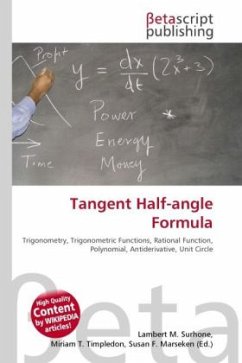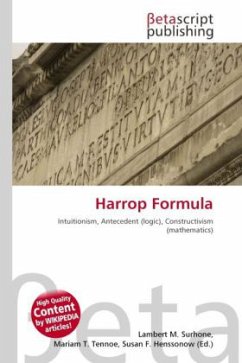
Larmor Formula
Versandkostenfrei!
Versandfertig in 6-10 Tagen
30,99 €
inkl. MwSt.

PAYBACK Punkte
15 °P sammeln!
High Quality Content by WIKIPEDIA articles! In physics, in the area of electrodynamics, the Larmor formula is used to calculate the total power radiated by a nonrelativistic point charge as it accelerates. It was first derived by J. J. Larmor in 1897, in the context of the wave theory of light. When accelerating or decelerating, any charged particle (such as an electron) radiates away energy in the form of electromagnetic waves. The full derivation can be found here. Here is an explanation which can help understanding the above page. This approach is based on the finite speed of light. A charg...
High Quality Content by WIKIPEDIA articles! In physics, in the area of electrodynamics, the Larmor formula is used to calculate the total power radiated by a nonrelativistic point charge as it accelerates. It was first derived by J. J. Larmor in 1897, in the context of the wave theory of light. When accelerating or decelerating, any charged particle (such as an electron) radiates away energy in the form of electromagnetic waves. The full derivation can be found here. Here is an explanation which can help understanding the above page. This approach is based on the finite speed of light. A charge moving with constant velocity has a radial electric field Er (at distance R from the charge), always emerging from the future position of the charge, and there is no tangential component of the electric field (Et = 0). This future position is completely deterministic as long as the velocity is constant. When the velocity of the charge changes, (say it bounces back during a short time) the future position "jumps", so from this moment and on, the radial electric field Er emerges from a new position.












